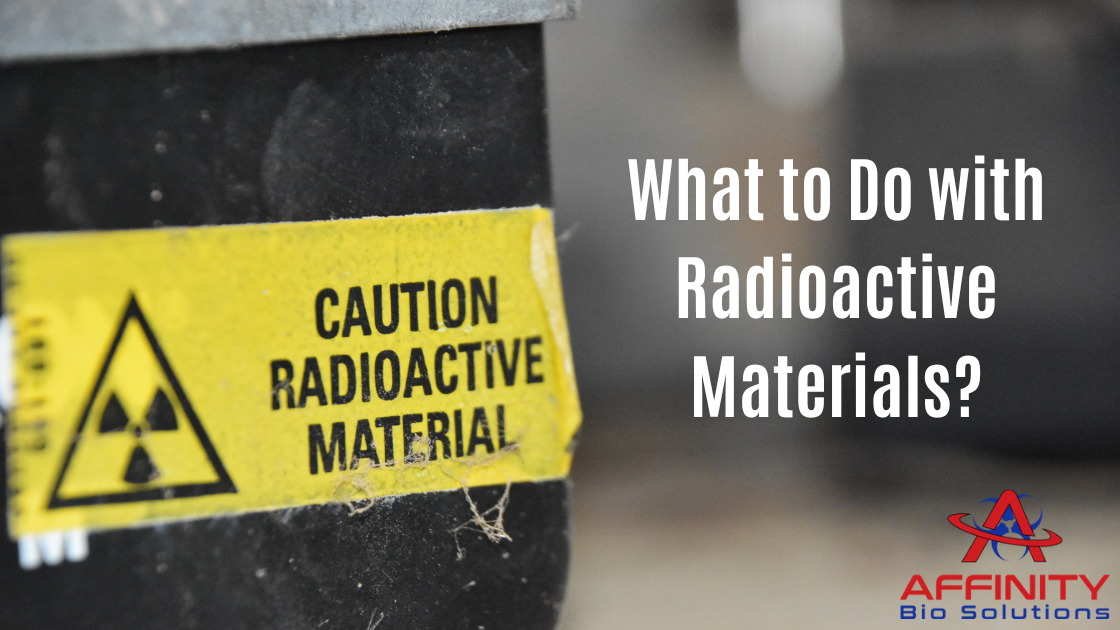
Residue or dump from nuclear substances is referred to as nuclear waste or radioactive material waste. This waste, including medical treatment and diagnosis from a nuclear reactor, emits dangerous energy. Thus, nuclear waste is thrown underwater to reduce radiation before disposal. Nuclear waste includes:
- High-level waste is the remains of used nuclear fuel in the forms of pellets and fuel rods.
- Intermediate-level waste is radioactive waste that doesn’t need cooling before storage and is harmful to humans.
- Low-level waste is materials used in nuclear plants, e.g., rags, tubes, tools, and clothing.
- Mill tailing waste: this waste – thorium, and uranium are natural ore, and the residue is known as mill tailing.
What to Do with Radioactive Materials
Radioactive materials are hazardous, and the reason for proper disposal is to protect the human, animal, and environmental health. If not, the material’s harmful radiation may get the living space causing unprecedented harm. Here are some of the harmful radioactive materials can cause.
- Human population: Radioactive exposure may affect future generations, causing deformities and poor birth, down syndrome, cancer, and other issues.
- Wildlife: the Chornobyl disaster is an example of the effect of radiation on wildlife. The radiation reduced brain function, causing deformities and other issues that negatively impact the survival of these animals.
- Local flora: plants are also affected by radioactive materials, like in the case of Chornobyl, where an entire pine forest was collateral damage. Also, bees and other plant-consuming creatures that help pollinate and grow flora are susceptible.
- Nuclear workers: those working with nuclear materials are in harm’s way. On many occasions, nuclear accidents lead to death. Also, improper storage of this waste increases exposure, which is dangerous for humans.
How to dispose of nuclear materials
The recent act encourages nuclear plants to reduce the amount of waste produced. However, when disposing of radioactive material of any level, there are specific ways to handle and irradiate the materials.
- Incineration: incineration is the burning of nuclear waste through commercial incinerators. These incinerators fashion suits such activities and low-level materials like rags, clothes, etc.
- Burial: there is shallow and deep burial. Shallow-level burial is usually for low-level waste, while deep burial is for highly radioactive waste. Many countries with natural resources use the geological disposal method to keep the dirt within the earth.
- Storage: radioactive material decay after some time which irradiates the material. The process of storing these materials is known as radioactive decay, but it takes time, depending on the material. In essence, the method is mainly for materials with a shorter half-life. However, many companies run the service commercially for those who can’t afford to own it.
- Recycling: there are some radioactive materials, like used fuel, so it is possible to extract the radioactive elements for reuse. For example, because of their long life span, companies can use extraction and separation methods for uranium and plutonium.
- Ocean: some unusable liquids with harmful elements are dumped into the ocean—the process requires materials with low radiation levels and in a controlled manner. However, marine life and, possibly, humans are vulnerable.
Contact Affinity Bio Solutions for All Your Professional Biohazard Cleanup Needs
- Biohazard Cleanup & Removal
- Crime Scene Cleanup | Trauma Scene Cleanup
- Unattended Deaths & Decomposition
- Suicide Cleanup
- Medical Waste Pick-Up, Transport and Disposal
- Water Damage | Flood Extraction
- Hoarded Environment & Hoarder Home Cleanup
- Vehicle Accidents | Vehicle Biohazard Cleanup
- Bodily Fluids | Blood Cleanup
- Odor Remediation | Odor Removal
- Homeless Encampment Cleanup & Biohazard Removal
- Abandoned Building and Foreclosure Cleanout
- Pest Removal in Arizona

